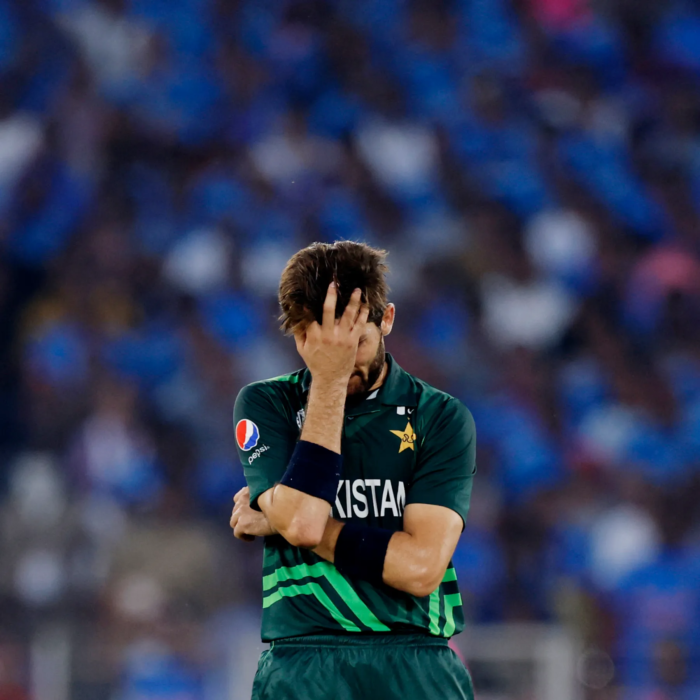Introduction
In the highly competitive arena of international cricket, every team strives for excellence and dreams of clinching the prestigious World Cup. The 2023 World Cup was no exception, with cricket enthusiasts worldwide eagerly anticipating stellar performances from their favorite teams. Unfortunately, Pakistan’s journey in the tournament ended sooner than expected, prompting a critical analysis of the factors that led to their early exit.
Tactical Approach and Team Dynamics
Strategic Decision-Making
One of the pivotal aspects influencing Pakistan’s performance was the team’s strategic decision-making on the field. Cricket, at its core, is a game of strategy, and the choices made during crucial moments can sway the outcome of a match. Analyzing the decision-making process, especially in high-pressure situations, reveals insights into where improvements could be made for future tournaments.
In the crucible of the 2023 World Cup, Pakistan’s strategic decision-making emerged as a pivotal factor influencing their overall performance. The team’s approach to crucial moments on the field reflected a delicate balance between aggression and caution. However, a critical analysis reveals instances where the decision-making process could have been more astute. From field placements to bowling changes, every move played a role in shaping the team’s destiny. The need for a strategic recalibration became evident, emphasizing the importance of a cohesive game plan that adapts to match dynamics.

Furthermore, the captaincy style came under scrutiny, with questions arising about the effectiveness of on-field leadership. Strategic decisions, intricately linked to the captain’s vision, demanded a nuanced understanding of the game’s ebb and flow. The introspection into Pakistan’s strategic choices underscores the imperative for a well-defined and adaptable game strategy, where decisions are not just reactive but proactive, ensuring the team remains a formidable force in the face of evolving match scenarios.
Team Dynamics and Coordination 👻
The dynamics within a cricket team are the invisible threads that weave individual brilliance into collective success. In the context of Pakistan’s performance at the 2023 World Cup, the examination of team dynamics and coordination is crucial. A cohesive unit, operating with seamless coordination, is the bedrock of triumph in any sporting event. However, during this tournament, glimpses of misalignment surfaced, raising pertinent questions about the synergy among players. The seamless coordination expected of a world-class team seemed elusive at times, impacting the overall efficiency on the field.
Team dynamics extend beyond the players to encompass the synergy between the captain, coaching staff, and support personnel. The analysis of Pakistan’s team dynamics involves dissecting the communication channels, understanding the shared vision, and evaluating the effectiveness of leadership in fostering a united front. Strengthening team dynamics requires a holistic approach, addressing not only individual player roles but also refining the collaborative spirit that propels a cricket team towards excellence. In the pursuit of future triumphs, refining team dynamics and bolstering coordination stands as a critical mandate for Pakistan’s cricketing resurgence.
Batting Woes: Unraveling the Run-Scoring Dilemma
Top-Order Instability
An effective batting lineup forms the backbone of any successful cricket team. Pakistan, however, faced challenges in maintaining stability at the top order. Consistent disruptions and early wickets created pressure that rippled through the batting lineup, impacting the team’s overall run-scoring capacity. Pakistan’s campaign in the 2023 World Cup faced a considerable challenge in the form of top-order instability, a factor that significantly influenced the team’s overall performance. The opening partnership, a cornerstone of any successful batting lineup, encountered disruptions that reverberated throughout the innings. Early wickets not only dented the team’s confidence but also exposed vulnerabilities in the top order. A cohesive and reliable opening partnership sets the tone for the entire innings, providing stability and allowing the middle order to build on a solid foundation.
The analysis of Pakistan’s top-order instability involves a closer look at individual player performances, examining factors such as technique, adaptability to varying playing conditions, and the ability to withstand opposition pressure. Addressing these concerns and forging a dependable opening pair is pivotal for Pakistan’s batting prowess, laying the groundwork for a more resilient and competitive team in future tournaments.

Technical analysis forms the bedrock of a batsman’s proficiency in cricket, and Pakistan’s performance in the 2023 World Cup underscores the importance of a meticulous examination of these skills. Shot selection, footwork, and adaptability to diverse playing conditions are pivotal aspects that demand scrutiny. The technical analysis of Pakistan’s batting lineup reveals nuances that contributed to both success and challenges during the tournament. Understanding the strengths and weaknesses of individual players in terms of technique provides insights into areas that require refinement.
Whether it’s refining shot choices under pressure or adapting to the varying nature of pitches, a comprehensive technical analysis serves as a roadmap for individual improvement and collectively enhances the team’s batting prowess. As Pakistan looks towards future tournaments, a keen focus on the technical aspects of batting becomes imperative for fostering a resilient and adaptable team at the international cricketing stage.
Bowling Strategies: The Quest for Wicket-Taking Formulas
Lack of Variety
Bowling is an art that demands versatility. Pakistan encountered obstacles in deploying a diverse range of bowling strategies during crucial match situations. Opponents capitalized on the predictability, limiting the effectiveness of the bowling attack. The lack of variety in Pakistan’s bowling strategies emerged as a significant impediment during the 2023 World Cup, contributing to the team’s challenges on the field. Bowling, often regarded as an art of versatility, demands an array of tactics to keep opponents on the back foot. Pakistan’s opponents in the tournament exploited the predictable nature of the bowling attack, limiting its effectiveness.
The absence of diverse plans, including variations in pace, line, and length, became evident, allowing rival teams to formulate strategies to counter Pakistan’s traditional approaches. To bolster their bowling prowess, Pakistan must emphasize the incorporation of a diverse range of strategies, ensuring unpredictability and adaptability in different match scenarios. A nuanced approach to strategic bowling, including the introduction of unorthodox deliveries and changes in bowling sequences, is essential for creating a more formidable and unpredictable bowling unit in future competitions.

Analyzing the bowling figures of Pakistan’s campaign in the 2023 World Cup unveils a notable concern, with particular attention drawn to the performance of Haris Rauf, who struggled with leaking runs consistently. Bowling figures serve as a quantitative representation of a bowler’s impact on the game, and in Rauf’s case, the analysis reveals a challenge in maintaining economy and restricting the flow of runs. Examining the specific match scenarios where runs were conceded allows for a granular understanding of the issues at hand. Haris Rauf, known for his pace and aggression, faced difficulties in finding the right balance between attacking and containing the opposition.
To address this concern, a thorough evaluation of Rauf’s bowling techniques, decision-making under pressure, and adaptability to different batting styles is imperative. Identifying patterns in his performance, whether in terms of line and length or consistency in executing key deliveries, is crucial for refining his role in the team. As Pakistan looks to strengthen its bowling unit, a targeted approach to enhance Haris Rauf’s effectiveness, coupled with a broader strategy for economy across the entire bowling lineup, becomes integral for future success in international cricket.

Impact on Fitness Levels and Misfielding 😯
The impact of fitness levels on a cricket team’s performance cannot be overstated, and in the context of Pakistan’s campaign in the 2023 World Cup, it became evident that the team struggled with maintaining peak physical conditions. Fitness is not merely a complementary aspect but a fundamental requirement for enduring the rigors of international cricket. The correlation between suboptimal fitness levels and misfielding instances during the tournament is particularly notable. Misfields, whether in the form of dropped catches or lapses in ground coverage, not only provide the opposition with additional opportunities but also demoralize the team.
To address this concern, a comprehensive evaluation of the team’s fitness regimens, training intensity, and recovery strategies is imperative. Identifying areas where fitness levels fell short and contributed to on-field lapses allows for a targeted approach towards improvement. Strengthening the fitness foundation of the players is crucial not only for preventing misfielding errors but also for enhancing overall on-field agility, endurance, and mental acuity. As Pakistan charts its course for future tournaments, a renewed commitment to maintaining peak fitness levels emerges as a non-negotiable element for sustained success on the international cricketing stage.

In conclusion, the multifaceted analysis of Pakistan’s performance in the 2023 World Cup unravels a tapestry of challenges and opportunities for improvement. From strategic decision-making and team dynamics to batting, bowling, and fitness levels, every facet of the team’s campaign has been scrutinized to distill actionable insights. The journey showcased moments of brilliance, yet it was punctuated by shortcomings that demand attention and rectification.
The imperative now is not merely to dwell on the missteps but to leverage this analysis as a blueprint for resurgence. Strategic recalibration, a renewed emphasis on team dynamics, addressing top-order instability, diversifying bowling strategies, and elevating fitness levels stand out as the focal points for Pakistan’s cricketing renaissance. As the team reflects on the lessons learned from the 2023 World Cup, the commitment to continuous improvement and a forward-looking approach will be instrumental in shaping a formidable and competitive unit for the challenges that lie ahead on the global cricketing horizon. This analysis lays the groundwork for a comprehensive roadmap, ensuring that the setbacks of today become the stepping stones to triumph in future tournaments.
Discover more from Sporty Vaibhav
Subscribe to get the latest posts sent to your email.


